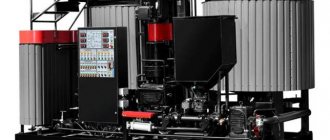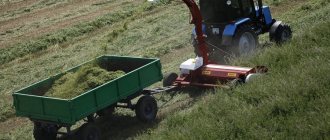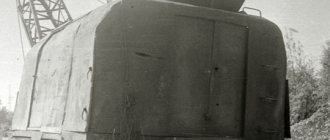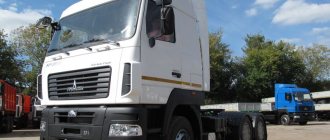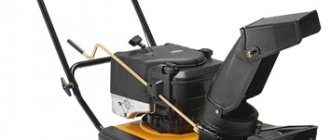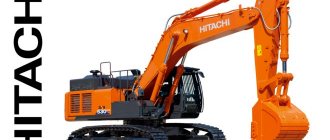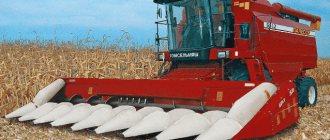- Harvesting
- Corn harvesting methods Harvesting corn on the cob
- Grain harvest
- Silage collection
- New Holland combine
Harvesting
Depending on the intended purpose, it is customary to distinguish three stages of harvest maturity for this tall-stemmed crop:
- “Milk ripeness” is revealed by the whitish color of the grains due to the high sugar content and the leaves tightly adjacent to them. At this stage, the crop is harvested in cobs, less often in grains.
- Wax stage. Light yellow grains are almost without liquid, the amount of sugar decreases, starch increases. At 70% maturity, corn is harvested for grain.
- Biological ripeness occurs when the grains become orange or deep yellow. At this stage, the crop is harvested to make silage. Although for high-quality juicy raw materials, good fermentation, even for silage, the mass is collected at the stage of waxy or milky ripeness.
"Khersonets-200" KSKU-6A - a rational model of combine harvesters for corn harvesting
Among its classmates, it is the optimal solution for a large agricultural enterprise.
Technical features:
- auto driving function;
- detector system for monitoring the condition of components and assemblies;
- suitability for night shift work;
- ergonomic combine operator workplace;
- hydraulic drive of the steering system and working mechanisms.
This machine is capable of collecting about 14 tons of cobs in an hour of fruitful work, which is equivalent to a 4-hectare field. At the same time, the completeness of harvesting reaches 98.5%.
The production models of combine harvesters that have flooded our market have only one drawback - their considerable price. Because of this, many farmers have successfully discovered a homemade combine harvester, which can be adapted to both a walk-behind tractor and a regular tractor.
Corn harvesting methods
To obtain different types of crops, specific types of agricultural equipment are used, taking into account agro-technical standards.
Harvesting corn on the cob
When harvesting corn cobs, observe the following requirements:
- 60% grain maturity;
- cutting plants above 15 cm from the ground;
- no more than 1.5% spoiled grain;
- more than 90% of the cobs are without leaves.
Cleaning and threshing of such cobs is then carried out at a plant for the production of canned or frozen foods.
Grain harvest
Combines for harvesting corn for grain adhere to the following standards:
- collection during the period of wax ripeness;
- set the cutting height to no lower than 10 cm from the ground, taking into account the lower cobs;
- do not allow the number of lodged plants to exceed 10%;
- loss of free grain is allowed no more than 0.8%;
- the content of “garbage” (rods, leaves, etc.) in the grain mass should be less than 4%.
Silage collection
When harvesting silage, they mainly use forage harvesters, which can mow, chop and load the mass for transportation in one pass. The cutting mechanism attachment feeds the stems and leaves onto rollers and then into chopping drums. Since grain has no nutritional value in the production of feed, during the collection process it is crushed by flattening rollers. Otherwise, silage is prepared simultaneously with grain harvesting by grain combines using special devices.
A high degree of grinding and fermentation of the product can only be achieved by using special combines for harvesting corn for silage. Special mechanisms compact the silage, and timely transportation ensures guaranteed quality of feed.
Description
The versatility of harvesting equipment is the main advantage of such harvesting mechanisms: separate collection of cobs, thorough chopping of green mass and feeding it into a special collection bin, if necessary, for winter storage.
The design features of the corn header are such that it can be used for any purpose, and the important parts and components themselves can be easily attached to the frame frame, and then to the harvester. There are even compact mechanisms that can be folded for movement on general highways and not interfere with the main traffic flow. But what the MTZ tractor looks like and how it is used and what model range of such equipment exists, as well as what their price is, can be seen here.
The video shows a description of the corn header:
The entire header consists of several main parts:
- Welded durable frame.
- Dividers for harvesting into cobs and mass and casing.
- A specialized rack for cutting cobs and a separate channel for directing it to the place where corn is collected.
- Rotating auger.
But what a segment mower looks like on a tractor and how to use it correctly can be seen here.
Each element of the header fulfills its purpose:
- The welded frame is made from durable steel billets that resemble gutters . Through special holes at the back of the frame on spacers, the structure is fixed obliquely to the combine. Moreover, the frame is made in such a way that it can be installed on any brand of harvesting equipment; divider units and casing are mounted along the perimeter of the frame.
- Divider mechanisms and casing elements can be made from combined materials, for example, durable metal sheet and plastic . The purpose of the dividers is to direct the green mass into specially designated channels for crushing, and the casing elements protect the rotating parts from the ingress of debris and contaminants. Moreover, it is noted that if these parts are plastic, then the performance of the entire mechanism is much more efficient, sliding occurs much faster. But metal elements also have their advantage - you can install additional spare parts or necessary elements on them. They will be able to minimize friction when feeding green parts of plants.
- Channels and laths . The racks are the main parts of a corn header. They are intended for breaking off the cobs from the stem, along which they are fed into a screw device for grinding. The direction of the plates is adjusted from the combiner’s cabin, and this is a great advantage and saves working time.
- The chopper is equipped with two cross knives, and this allows you to cut the stems into fragments of approximately 10 cm . They are placed in bunkers for reheating; this is the kind of food that is provided to livestock during the hungry time of winter.
- Auger equipment . It is located in the center of the chute in the frame of the header, with its help the cobs are fed into the chamber with an inclination for ease of collection and reduction of crop losses.
You may also be interested in information about what the MTZ 80 tractor looks like and how it is used.
New technological approaches made it possible to lighten the entire structure, and its ease of operation made the hard work of farmers easier. Some design solutions made it possible to replace the chain drive with a belt drive, which is also a feature of the new models; it has better performance and does not require careful maintenance and constant lubrication of the links. In addition, lightweight options allow you to significantly save on fuel, which is also important.
But here’s what the attachments for the MTZ 82 tractor look like and how they are used, and what their price is.
Types of corn harvesters
According to the design features, self-propelled, semi-mounted and trailed corn harvesters are distinguished. The units consist of such main components as: frame, reel, conveyor, chopper and auger. The operating principle of the device is as follows:
- The auger mechanism lifts the plant stems and pulls them down;
- Next, the cobs are separated by tear-off plates and the mass is sent to the threshing apparatus.
- The chopper captures all fallen crops and weeds;
- Knives and blades crush stems and leaves, leaving a green mass on the field.
The processes of grain collection and waste grinding occur simultaneously. Agricultural equipment specialists have compiled a rating of the most popular combines and trailers for harvesting corn and silage:
New Holland
Reliable New Holland equipment has earned popularity in the domestic market thanks to comprehensive control by various intelligent systems. Thus, the AutoFloat system stabilizes the position of all headers in relation to the ground, even on uneven terrain. The IntelliFill function monitors the position and fill of the body. Various series and trailed headers will allow you to configure exactly the type of device you need for harvesting cobs or grain. FR series combines are recognized as one of the best forage harvesting machines, the headers of which can be used both for harvesting young low plants and hard mature stems. The speed and convenience of cleaning is enhanced by intelligent control, which greatly facilitates the operator’s work.
CLAAS combine, ORBIS 600 header
Innovative CLAAS technologies allow you to harvest maximum yield at minimal cost and in any working conditions. High-precision assembly guarantees reliability and low loss rates. The new design has made it possible to increase the grip to 6 m, and transport discs carry the entire cut mass through the channels of the header. Convenient and simple operation is now possible thanks to the large viewing angle and low axial load. The three-speed gearbox provides flexible speed settings.
ARGUS from Rostselmash
High-performance corn combines are efficient and convenient in harvesting food and feed grains. Thanks to the use of modern technology, the distance setting between the cob separation plates can be reproduced directly from the operator's cab. The knife rollers of the ARGUS header allow you to reduce the cost of subsequent field processing by chopping the stem to pieces of no more than 100 mm. Additional wear resistance of the mechanisms is ensured by high-strength connections and gearboxes created according to European quality standards, and the two-way drive system (bevel gearboxes and cardan drive) is much more reliable than drives with chain drives.
Combine harvesters from the manufacturer CASE
Modern models from CASE for mowing from 6-18 rows have excellent maneuverability (weight is almost 900 kg less than analogues) and high productivity thanks to row sensors for precise movement of the header. Reducing yield losses is achieved by modern folding separator nozzles for tall varieties and hydraulic control of the slots. Shredders installed on the unit accelerate the decay of stems and enrich the soil even before the onset of cold weather.
CornFlow Series by Massey Ferguson and Capello
6- and 8-row units for efficient harvesting of even fallen crops in one-piece and folding versions, presented in six models for combines of the Activa, Beta, Centora and Delta series. Basic equipment includes pressure plates, chopper and lift height adjustment for harvesting on any terrain. Folding models are compact and easy to transport, occupying only 3-3.5 m in the transported position.
The reliability of the design is ensured by welded fastenings, plastic chain guards and sealed hinge joints of the folding sections. Standard and side augers ensure uniform material flow.
Attached corn harvesting equipment
Standard headers, which are equipped with modern grain harvesting units, are used as auxiliary adapters for this operation.
The simplicity of their design allows you to replace the header and re-equip the thresher yourself. For example, the Niva SK-4 combine is equipped with a ZhKN-2.6M header, and SK-5, SK-6 are equipped with PKK-4. They differ from each other not only in their grip width, but also in their operating principle. ZhKN-2.6M has a reinforced feeder chamber and a beater drum, and PKK-4 is characterized by picker-scraper cob separators and a rotary grinding apparatus. As mounted corn harvesters, you can use homemade mechanisms that are created on the basis of a mini tractor or walk-behind tractor.
Operation of corn harvesters
The combine is mounted with special headers on a level area using tie-down hooks. Next, the machine is run in and the operating condition is checked: the bearings and gearboxes are heated, the angle of inclination of the cutting knife relative to the ground line is adjusted.
A device without maintenance should not be allowed for field work; this can lead to crop loss, decreased soil quality and uneconomical fuel consumption. Caring for nature and a professional approach to agricultural production are the key to an excellent harvest!
How to use
The operating principle is not complicated:
- The dividers built into the header themselves direct the green mass and pull them along the channels; if necessary, they can also lift the stems.
- Cylindrical rotating mechanisms continuously feed corn stalks, and the cobs are immediately separated.
- Then the cobs are pulled by chains into a screw device, where the process of threshing and feeding the finished product into a special collection takes place.
- Horizontal cutting devices crush the stems and send them to another mass collection bin.
- Some models can simultaneously process from 4 to 12 rows, and there are also models that can work on hilly terrain without problems and collect to the very root without leaving stems on the field.
Manufacturers and prices
In order for the harvest to take place with minimal losses, the farmer must take care of reliable and durable equipment with the highest possible efficiency. And if you need to remove long corn stalks, it is also important to cut it as close to the ground as possible. Therefore, you should not save on unknown and unreliable brands, but pay attention to proven agricultural units from well-established manufacturers over the years:
- Equipment from the Gorengof company . The manufacturer has launched the production of folding and standard headers, and the number of harvesting rows may vary. Also, different types of cutting units can be installed on different models, which significantly affects the quality of harvesting and chopping of green mass. The company's engineers achieve in their models the universality of operation of all components and the ability to work in different climatic and relief conditions. The casing is made of specially modeled plastic, capable of shedding cobs or already processed corn without sticking to the frame. Thanks to durable but lightweight parts, significant fuel savings of up to 15% have been noticed! The most popular models are those with 6 rows for cultivating the field; moreover, they can be mounted on any type of tractor or tractor. The price ranges from 990 thousand rubles. But what is the price of the Buhler Versatile tractor and where can it be used is described in great detail in this article.
Cleaning equipment from Fantin i. The main advantage of harvesting equipment is the high-quality and reliable assembly of all components, mechanisms and parts. The company has its own newest production complexes, and all the equipment is of the latest technological modifications. Management's policy is that every component, mechanism and part undergoes a thorough check before installation, and only after positive tests can it be installed in a harvesting unit. Absolutely all of the company’s equipment is reliable and durable, and the unit’s operation is designed in such a way that it ensures minimal losses of both green mass and cobs, compared to other manufacturers. And if you purchase a header in combination with a combine, the manufacturer has provided it with a video component that broadcasts the entire harvesting process to the display of the built-in device. The cost depends on the scope of delivery, but not less than 1 million rubles. But where and how the Terrion 5280 tractor is used and what disadvantages such equipment has, you can see in the article at the link.
Header from the ARGUS company. Clover PPK-1 . The company's products are capable of quickly and efficiently harvesting corn, with minimal losses. This is ensured by convenient configuration of the necessary equipment parameters. The hydraulic unit can be adjusted directly from the combine operator’s cab based on the soil topography and its density. The cost of assembled equipment can reach about 900 thousand rubles. There is also such equipment as the Challenger crawler tractor, but how and where you can use it can be seen in the article at the link.
For the latest model, spare parts can be easily found, but for others you need to order in advance.
Corn harvesters are a type of highly specialized agricultural equipment
Harvesting corn requires considerable effort and time. The growth of acreage, the intensification of cultivation technology, as well as the increase in demand for this crop from the livestock industry have led to the replacement of manual labor with new mechanized units that make it possible to collect it not only quickly and efficiently, but also with minimal human participation.
One of these is a corn harvester, which allows you to fully automate this operation.
Quality control
During the storage period, control the temperature, humidity, color, smell, and purity of the product. Particular attention is paid to indicators of pest and disease infestation.
The quality of corn must comply with the standards established by GOST 13634-90 “Corn. Requirements for procurement and supply." The standard applies to corn in grain and on the cob, harvested and supplied for food, feed purposes and for processing into animal feed.
The basic norms in accordance with which payments are made for commercial corn grain are given in the table.
About the device
As mentioned earlier, mini grain harvesters are practically no different from larger combines, performing absolutely identical work.
Such units collect the ears of corn and then grind them. It often happens that it is not necessary to immediately process what has been collected. In such cases, a grain hammer crusher is used. The final process will be to clean the resulting grain from straw and other debris.
The use of this technology allows you to simultaneously perform several tasks that were previously available only to a certain type of equipment performing each type of activity.
We are talking about a thresher, a winnower and a reaper.
As for modern mini grain harvesters, they can be equipped with additional equipment that can significantly expand their functionality. In particular, with the help of such units it becomes possible, in addition to harvesting grain, to sow vegetable seeds, knit sheaves, etc.
Mini grain harvester
Most models of mini combines are equipped with a seat for the operator, and some are smaller copies of large combines, i.e. their design includes a full-fledged operator cabin.
Movement is carried out using three forward gears (some models may have more gears) and one reverse gear.
There are several levers in the cockpit, each of which is responsible for a specific task.
In particular, there is a clutch lever, a gear shift lever, as well as control levers with which you can adjust the cutting height of the ears. This is a very useful feature, especially in areas with slopes and difficult terrain.
These grain harvesting units have a low-power diesel engine , which allows significant savings on fuel consumption.
This is very important for individuals who have a fairly small subsidiary farm, where large capacities are not required, but the issue of saving is always quite acute.
At the final stage, when straw and other debris are removed, the grain ends up in a special bag or tank (in larger models). As for the straw, it is discharged through a different channel, separate from the cleaned grain material.
Based on this, we can summarize the main advantages of this type of technology:
- Affordable price for a mini harvester, which is acceptable for most categories of citizens.
- Economical fuel consumption, which has a positive effect on the cost of the final product.
- The compact dimensions of the unit allow it to show good maneuverability, which is very useful in areas where there is difficult terrain.
- Ease of operation allows you not to obtain a special permit or appropriate certificate.
- Possibility of carrying out repairs directly on the job site, without transportation to a service center.
- Due to their small dimensions, these mini harvesters can be easily stored in relatively small spaces.
For more information about the operation of the mini-harvester, watch the video:



